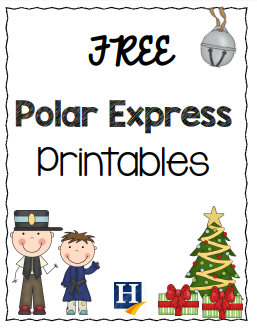The Polar Express by Chris Van Allsburg is one of the most popular books/movies to study during the holidays. One way to teach this story is by using a unit study. Unit studies cover a variety of subjects that all center around one theme (in this case, The Polar Express). Spice up your homeschool with this FREE Polar Express unit study.
3 Tips for Rearing Better Readers
Sometimes homeschooling moms feel like they’ll go bonkers trying to teach reading. While most children do eventually become fluent readers who read for understanding, the process can be challenging. Here are a few ways to make the process run smoother:
- Choose “just right” books. Many parents don’t want their children reading books that are too “easy” for them. The Polar Express is a fantastic book to study for all age groups. Whether your focus is fluency, alliteration, vocabulary acquisition, or comprehension, you can use this book for just about anything! Choosing a “just right” book means using a book that’s not too easy but not so hard that it frustrates a child. It’s…just right.
- Make connections. Teaching children to make connections aids in comprehension because it teaches them to relate to what they’re reading in some way. Kids might make “text-to-text connections” (connections between two books they’ve read) or “text-to-self connections” (connections between what they’re reading and their own lives). In both situations, they’re able to relate one thing to another, increasing their chances of comprehending what they’re reading. With The Polar Express, they can easily make a connection between the movie and the book if they’re familiar with both. They can also likely connect with the boy in the story as he has the best after bedtime experience ever.
- Use context clues. Whether they’re trying to figure out what “lurch” means or don’t understand why lights would “flicker” in The Polar Express, using context clues can help them figure out what these words mean. Teach your children to use the illustrations as well because they’ll often give clues about what’s taking place in the story, too.
Polar Express Science Experiment: Grow Ice!
This makes a great follow-up experiment after reading The Polar Express. To do this simple experiment, you’ll just need a coffee mug that’s wide and a water bottle. Add a few drops of food coloring to the water in the water bottle and then close the lid (tightly) before laying it flat on its side in the freezer. Leave the bottle of water there for approximately 2 hours and 45 minutes. At the end of this time, the water should be “slush” (not quite frozen but not as liquid as it went in).
Remove the bottles from the freezer and handle them very gently. Unscrew the lid from the bottle and slowly pour the icy water over a mug of ice. As the water builds on itself, it will create a small mound of ice! Continue pouring slowly and let the ice take whatever shape it takes. At this point, the ice is literally growing!
Don’t miss our favorite – – Santa Tracker!
Polar Express Printables, Puzzles and More!
Click the image below to download free printables perfect for a study or just for fun!
The Polar Express Book and Movie
Click the images below to order.
Tasha Swearingen
Tasha is a homeschooling mom to 5 and has been homeschooling for 14 years. Currently, her children's ages span from toddler to young adult. Tasha has a Bachelor's of Science degree in Social Sciences from Florida State University and is working on her MBA through SNHU/Berklee School of Music.
Latest Posts

Guest Post by Gabriel Morse For several years, I sat for long hours every day behind one of those battleship gray desks in a windowless, dull, gray office. The pay was enough to take care…
Read more >
This post is sponsored by Little Monsters Universe. I'm Tina Salmanowitz, an advocate for homeschooling and science education. With over a decade of experience as a science educator (in class…
Read more >
This post is sponsored by Time4Learning. Before the pandemic, it was business as usual for Boca Raton resident Nikki Warris. Her two daughters, 5-year-old Natalie and 8-year-old Lexi were…
Read more >







